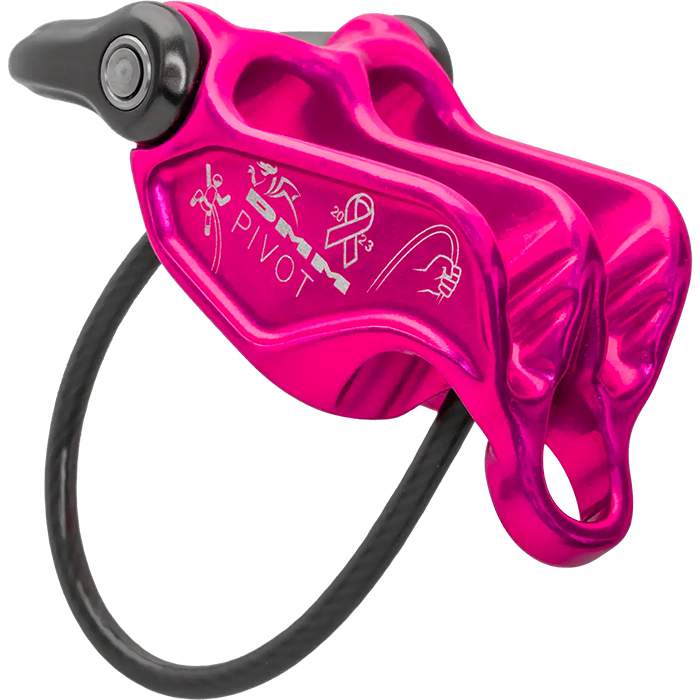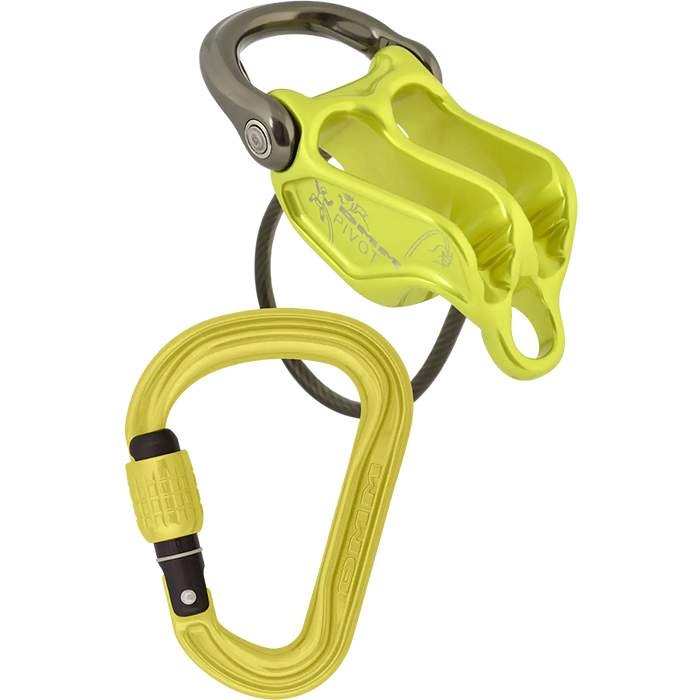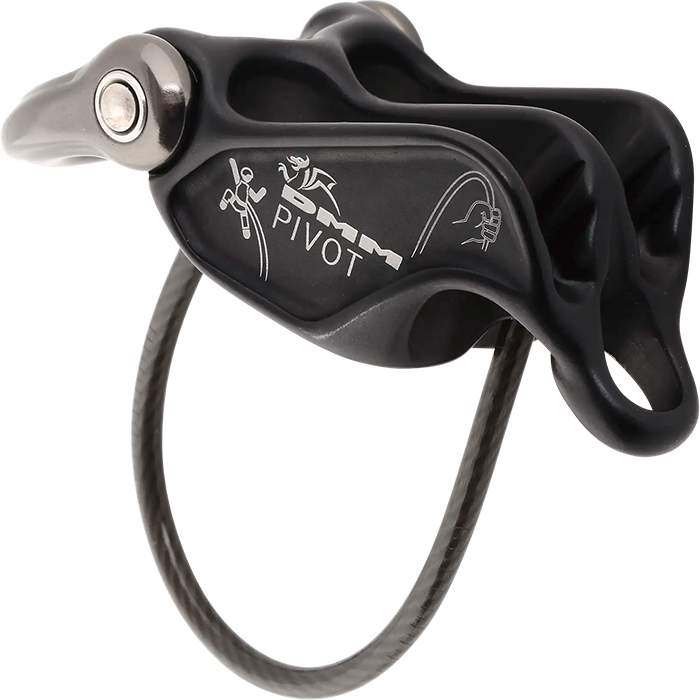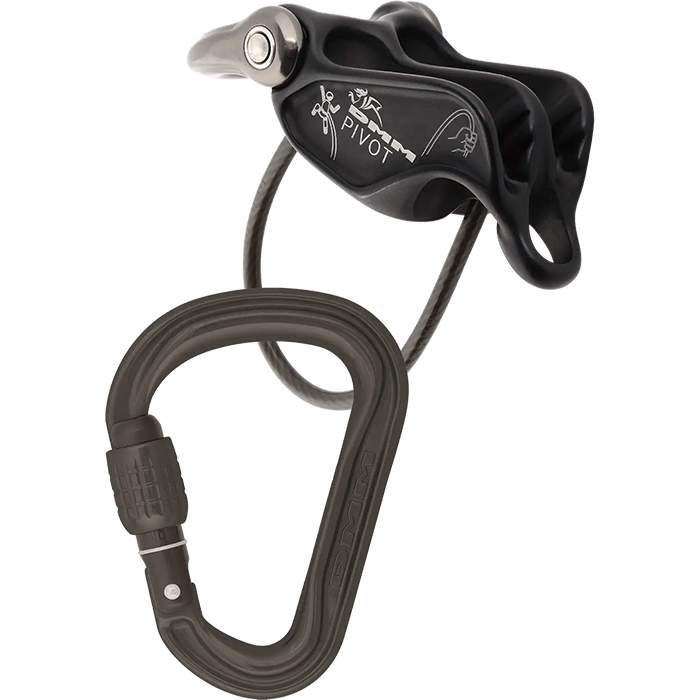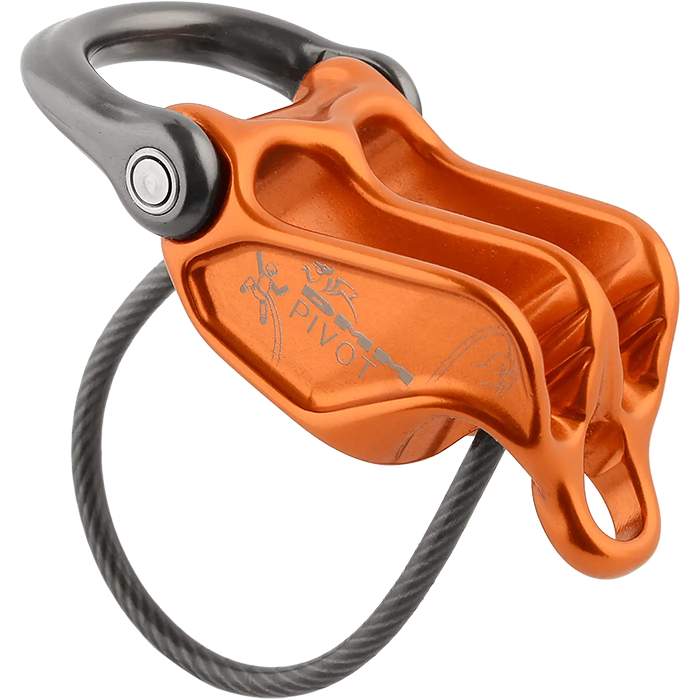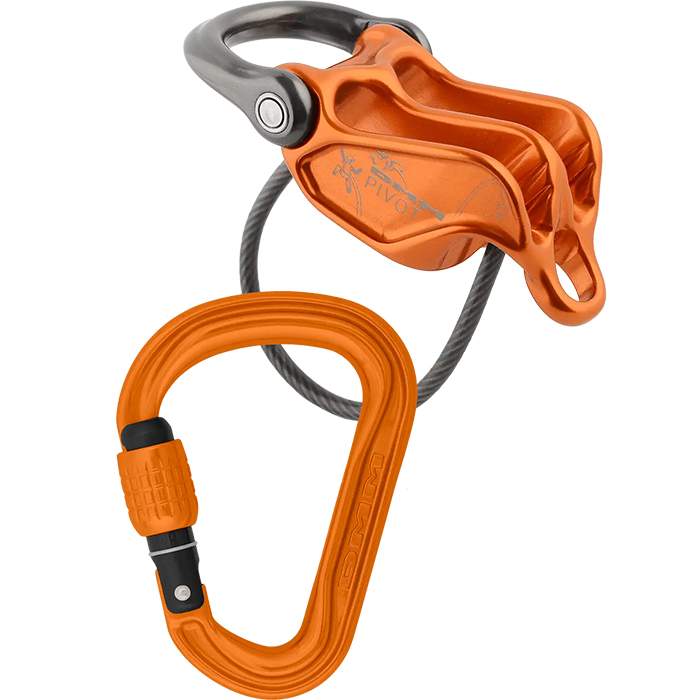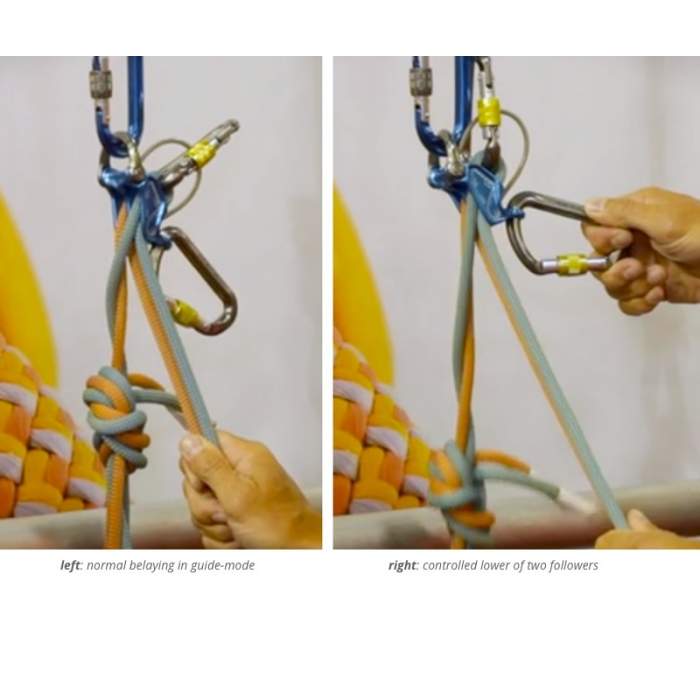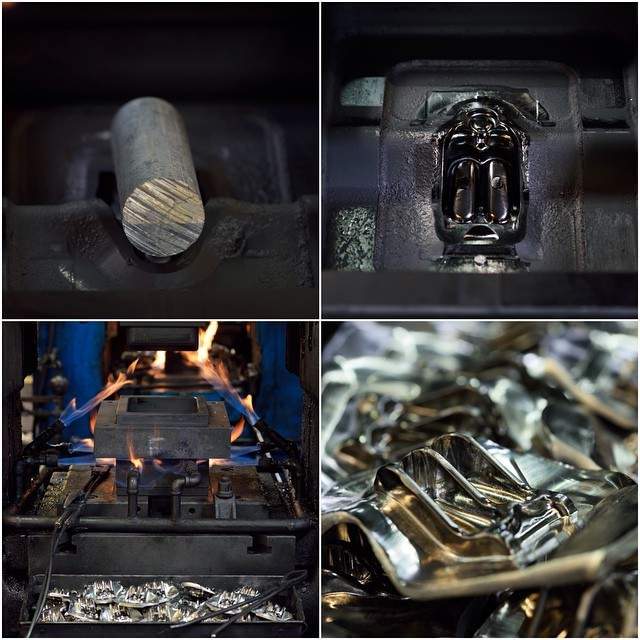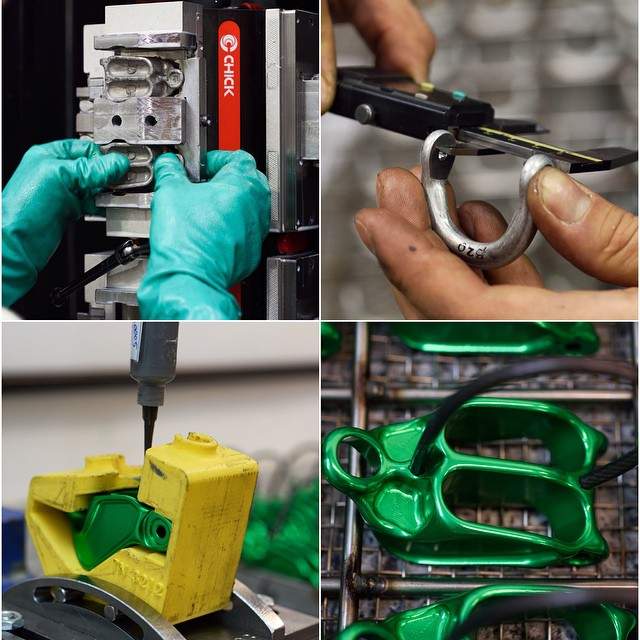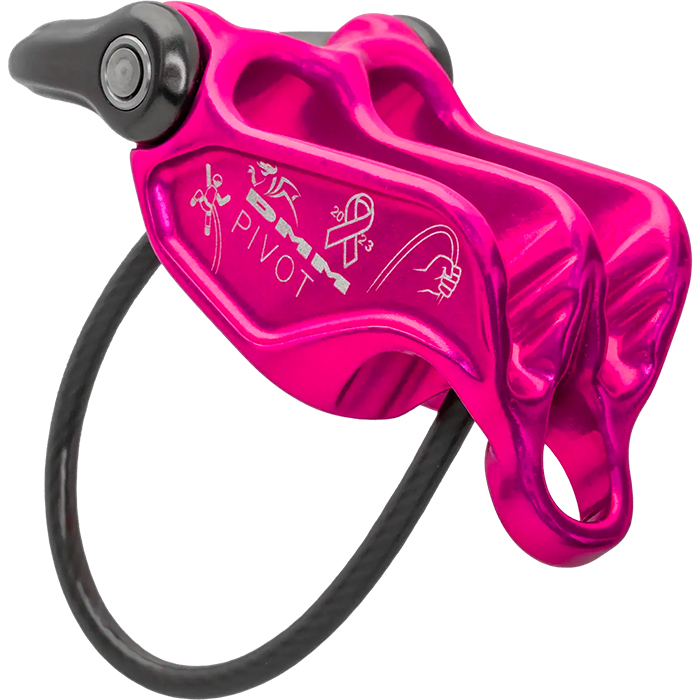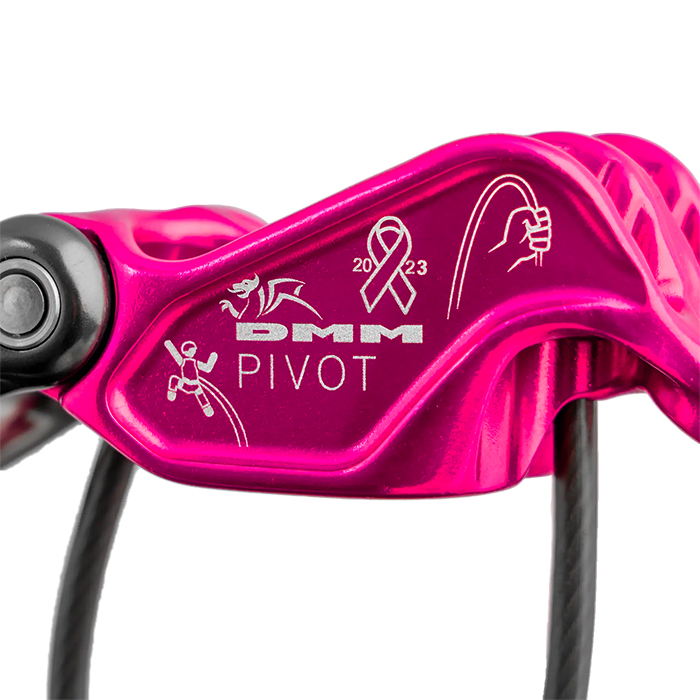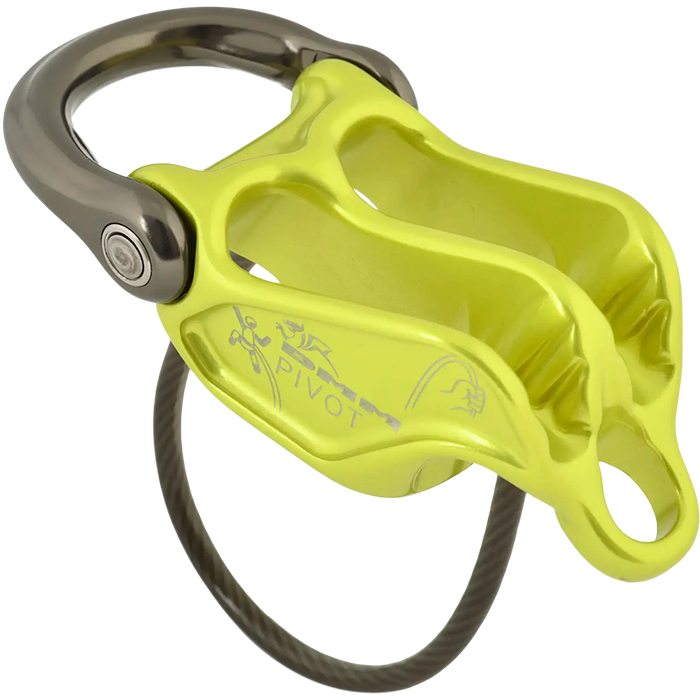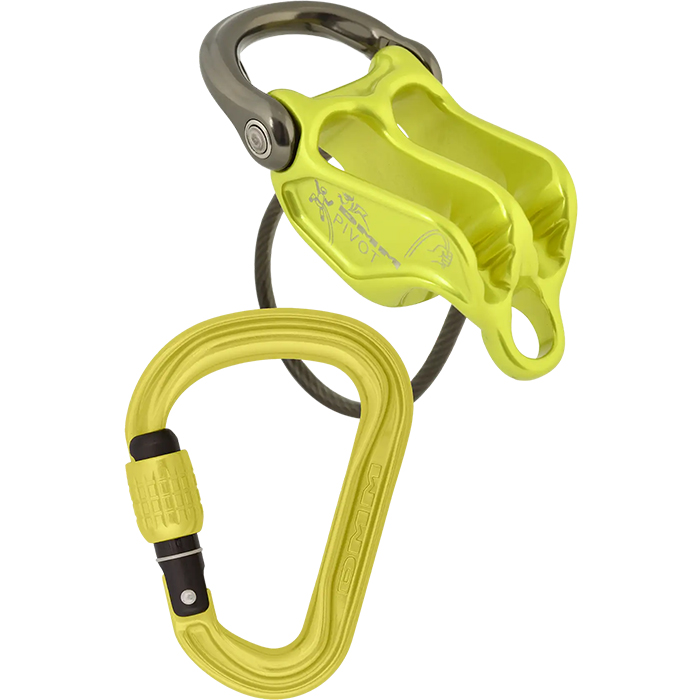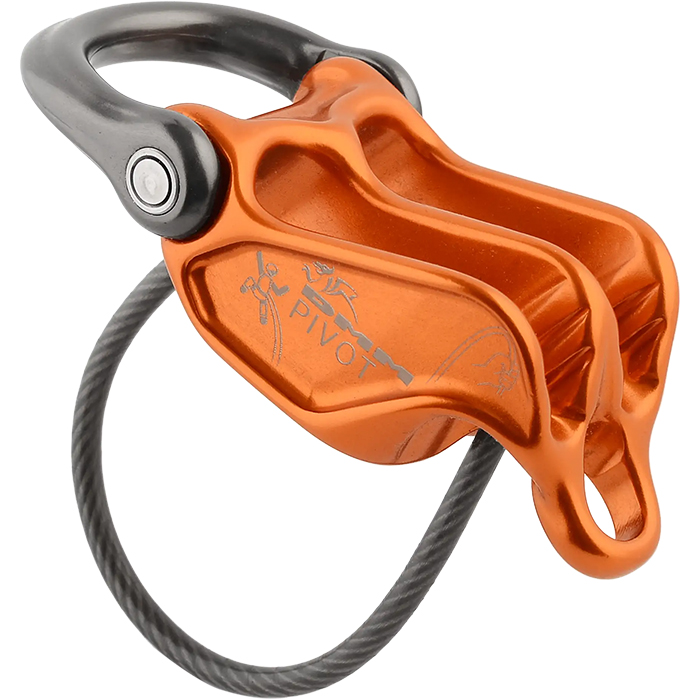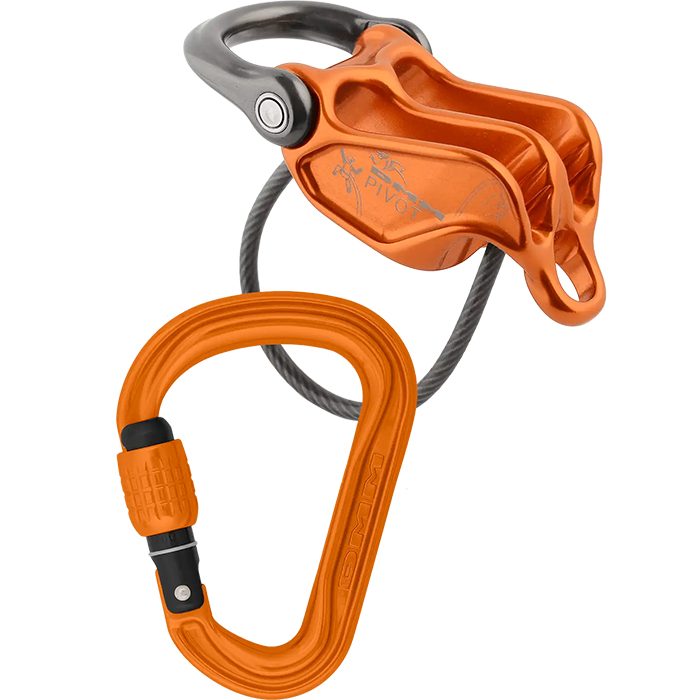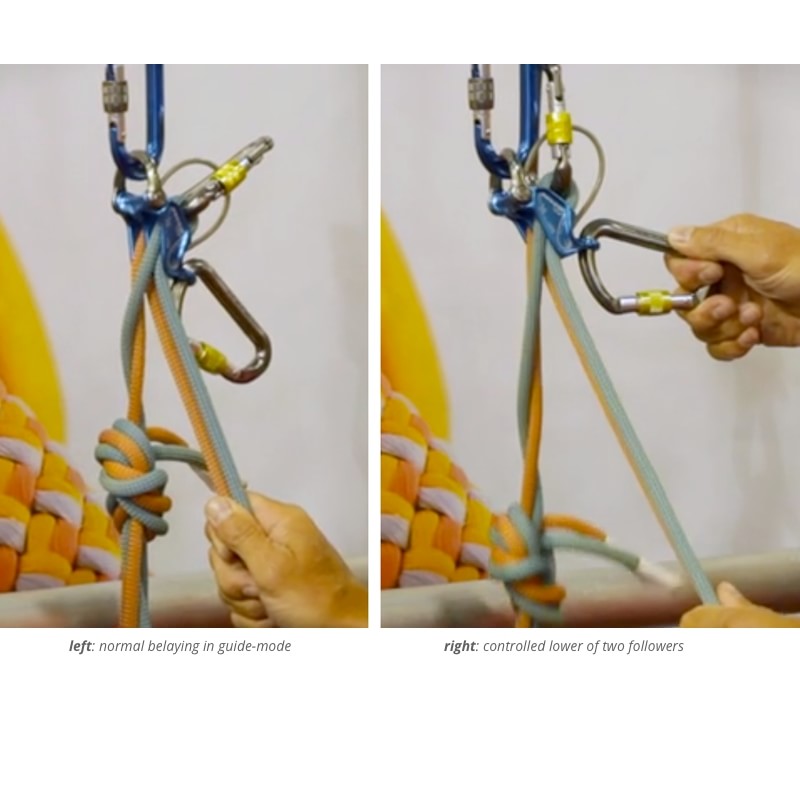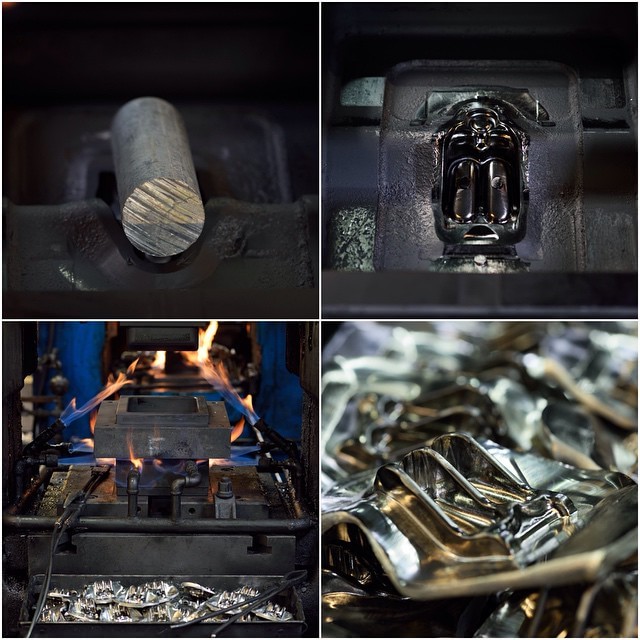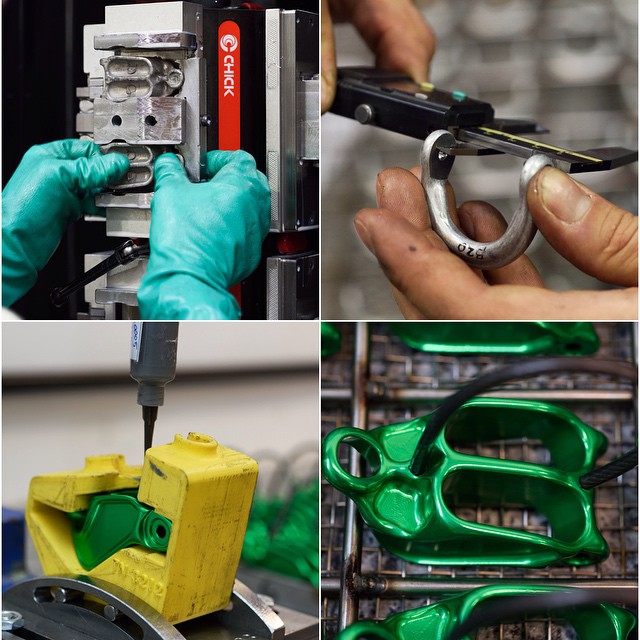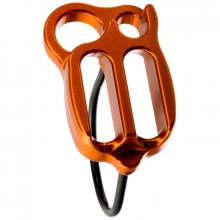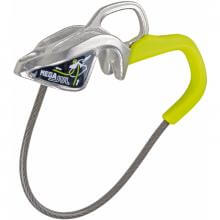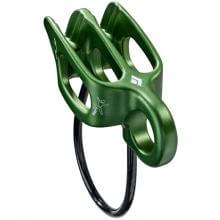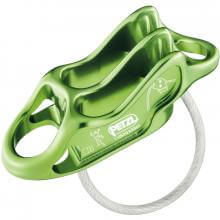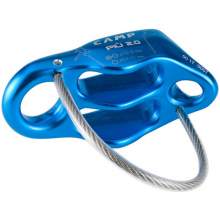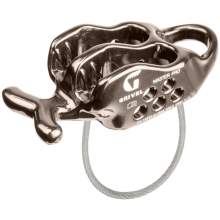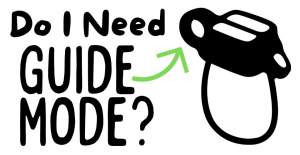Pivot
Description
Versatile, functional and innovative, the new DMM Pivot is a modern belay device that caters for modern belaying techniques with modern ropes. Meticulously researched and developed to provide optimum performance both belaying from the harness, and direct from the anchor. The Pivot provides smooth paying out, a secure and confident catch, and controlled lowering.
The head turner is the innovative pivot -this patent pending solution shifts the lever arrangement to allow controlled and easily initiated lowering when used in guide/direct mode. Even with a weighty second, the belayer can lower one, both, or either second with total control using the specially shaped biner cavity. Once the top is reached, the Pivot will be a trustworthy abseil partner for the return to the base.
Perfect for alpine, winter, and multi-pitch trad. All of these features are wrapped up in a package weighing only 72g. Classic DMM innovation.
Retail price
When you click a link below and then checkout online, no matter what you buy (climbing gear or not), we get a small commission that helps us keep this site up-to-date. Thanks!


Device Type  Device TypeTubeThe most commonly used belay type also called an “ATC” or “tuber.” Other than a distinction between other belay device types, “Tube” is a rarely used term, most climbers just assume you're talking about this style when they refer to your "belay device." 
Figure 8Mostly used in rescue, canyoneering, tactical, work safety, or by old school climbers and rappellers. One reason they went out of popularity with recreational climbers is because they tend to create twists in the rope. 
Brake AssistThese devices assist in stopping the rope when a climber falls or hangs on the rope. 
Often referred to as “auto-blocking” but that’s not the official terminology because no belay device should be assumed to work automatically by itself, even if it feels like it does (or does most the time). PlateWhen simplicity is a must, or you started climbing before Tubers were the norm. Bonus: They tend to be very light weight. 
DescenderFor rappelling, not for belaying a lead climber or top-roping. 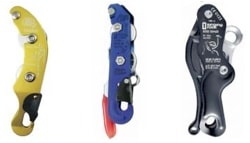 |
Tube |
Weight (g)  Weight (g)In grams, the weight, as stated by the manufacturer/brand. |
72 g |
Belay Brake Assist  Belay Brake AssistThis is when the belay device significantly reduces the amount of holding power the belayer must exert to stop a fall and hold a climber. This is also called "assisted-braking" as the device must hold a significant amount of the climber’s weight; this term does not include friction-adding "teeth" found on some tube style belay devices. Confusingly referred to as “auto-blocking” or “auto-locking” these terms wrongly imply the device will always, automatically, stop a fall or hold a climber even if the belayer/rappeller is hands-free. These devices are not meant to be used without a hand on the braking side of the rope; the belayers/rapppeller brake hand should always be on the brake rope. Worth ConsideringMost of the mechanical brake assist devices only hold a single strand of rope and are not capable of double-strand rappelling (the most common method of rappel). |
No |
| Rope Options | 1 or 2 ropes |
Guide Mode  Guide ModeThis is when you belay directly off the anchor instead of your harness. Guide mode is helpful if you climb outdoors a lot because it reduces the holding power required from the belayer. When your partner falls or rests, the weight of the climber is held mostly by the anchor and the belay device. Tubers and PlatesWhen belaying in "guide mode," the tubers and plates turn auto-blocking. During a fall, the climbing rope pinches the slack rope, completely stopping the movement of either rope. A common guide mode setup shown below. 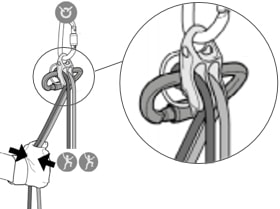
Mechanical Brake Assist DevicesThere is no difference in the functionality of the device. A brake-hand should always be on the rope to ensure the climber is caught in the case of a fall. A common guide mode setup shown below. 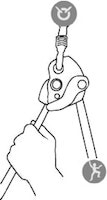
Where guide mode is used
Learn Morehttp://www.climbing.com/skill/essential-skills-auto-blocking-belay-devices/ |
Up to 2 followers |
Teeth  TeethTeeth are only seen on tube devices. They add friction that helps grip the rope for more belaying control. This is helpful for belaying heavier climbers. Teeth are becoming standard on new tube devices. 
Worth ConsideringTeeth do wear out. You can limit wear by rappelling on the side without teeth (if you don’t need the extra friction). Once they’re worn, you’ll still have a usable belay device, just less friction. |
Yes |
Rope Range (mm)  Rope Range (mm)The range of rope diameters, in millimeters, that the manufacturer/brand specifies can safely be used. This is the best case scenario and does not necessarily take into consideration that certified ropes have a tolerance of +/- .3 mm. Recently, manufacturers have started to add an "optimized" rope range -- this is the range that will result in the nicest handling of the belay device. | 7.3 mm
- 11.0 mm
single: 8.7 - 11 half/twin: 7.3 - 9.2 |
Certification  CertificationsThe main climbing gear certifications are CE and UIAA--and normally the UIAA creates the rules that the CE body also supports. When possible, we try to list all the certifications the product carries. To sell a climbing product in Europe, the device must be CE certified. There are no official requirements to sell climbing gear in the US. The UIAA certification is a voluntary process. Learn MoreRock and Ice Certifications Guide |
EN |
A pivot in features makes a better device
by anonymous on 03/31/2020The DMM Pivot is a good auto-blocking tube device, though it isn't the lightest option, nor is it compatible with the skinniest single ropes on the market. It also incurs a moderate amount of friction when pulling slack through the device in autoblock mode. In our estimation, this device is nothing special, and the pivoting anchor loop is rarely an asset. Still, this is a good belay device that performs in the middle of the pack for auto-blocking belay devices.
Just about every climber who climbs outside eventually needs to own a tube style device, either for rappelling or cleaning. Which one climbers own is driven by things like ease of use, cheapness and availability. For that there is little reason to step past the brand that every climber knows, Black Diamond. Their hold on the North American climbing market can be at least partially drawn to the ATC line, and as it has moved past household name to the likes of the Kleenex of belay devices, we’re guessing that it will be on this list in some form for a long time to come.
Overall I would heartily recommend the Pivot for just about any climbing except perhaps if you belay people working projects a lot, where obviously an assisted braking device is the best choice to hold people resting on the rope regularly. But, even for pure sport climbing, if a mate is going for a redpoint burn on their project and I want to give the perfect belay: quick to pay out for smooth clips, quick to take in excess slack, and confident to be able to catch big falls comfortably it is now the DMM Pivot that I will reach for. DMM do recommend using the Pivot with their newish Rhino HMS krab. I used it with DMM Belay Master HMS and some old Wild Country HMS because those are the krabs I have, but it worked flawlessly with both. The Rhino might be a great krab, but I wouldn’t worry too much about not having one if you do pick the Pivot.
The biggest advantage of the DMM Pivot is the ease of lowering your partner in guide-mode. It takes almost no physical effort to release the load, and you benefit from the added safety of a controlled belay. If you are a guide, or often use guide-mode while bringing up your partner(s), the Pivot is game-changing in time and safety.
Overall, I found the Pivot to be a solid piece of equipment, and until a plaquette style belay/rappel device comes out that is light, requires little effort to belay in guide mode, belays both thin and thick ropes well, releases from an assisted brake with ease, and belays and rappels smoothly, the DMM Pivot will stand as a gold-standard item. Because I have a quiver of belay devices, I have the privilege to choose the right device for my day of climbing. The Pivot has become a regular tool in my guiding and climbing. I specifically choose the Pivot when I am belaying from above using ropes less than 9.2mm in diameter, and when I know rappels will be part of the descent.
Versatile, functional and innovative; the Pivot is a state-of-the-art belay device catering for modern belay techniques with the latest ropes. It excels when belaying both from the waist and directly from the anchor. Perfect for multi-pitch trad, winter and alpine climbing, the Pivot is the ideal companion for your adventures in the vertical realm.
I feel the DMM Pivot is not a gimmick but a great innovation. If you are using a guide plate a lot you are going to notice these changes and if you think about it, if you are lowing something it’s because there is a problem. When there is a problem you want things to run smoothly, the DMM Pivot will really help.
1 of 3 new belay devices for 2015, the DMM Pivot takes a uniquely simple approach to solving a problem that has plagued "guide mode" belay devices since they were invented. No more backup prusiks or other shenanigans to slow you down.
This video goes over the new Belay Devices and Ascenders that were slated to come out in 2015. Including the CAMP Matik, DMM Pivot, Mantis and Grip, along with the Edelrid Jul2. It also covers the new Black Diamond Index ascender and the upgrades to the Petzl Ascension.
Instruction for how to use DMM Belay Devices and warnings in details, with instructional pictures.

